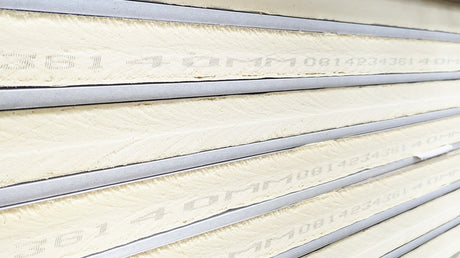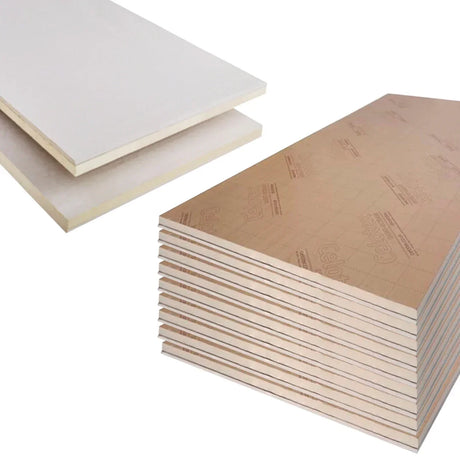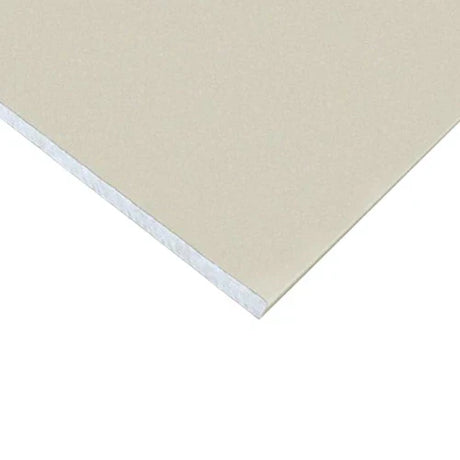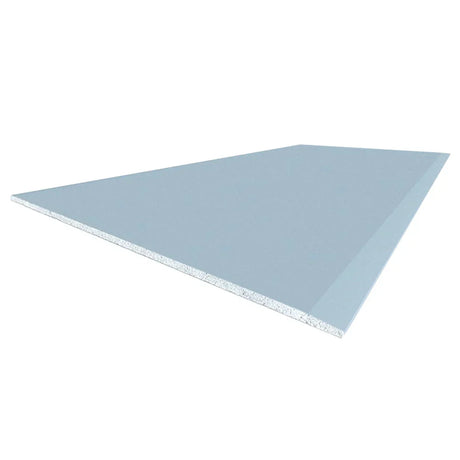When planning your next renovation or new build project, the decision between standard plasterboard and specialised solutions can significantly impact both your immediate costs and long-term satisfaction. At DIY Building Supplies, we've helped countless customers navigate this decision, and one question keeps coming up: is acoustic plasterboard worth the extra investment?
After years of supplying premium building materials to trade professionals and DIY enthusiasts across the UK, we've witnessed firsthand the difference that choosing the right materials makes. We knew customers deserved better than poor material choices leading to noise complaints and expensive retrofitting projects, which is why we're committed to helping you make informed decisions before you start building.
Understanding the Key Differences
What Makes Acoustic Plasterboard Special?
Standard plasterboard serves its purpose admirably for creating smooth walls and ceilings ready for decoration. However, when it comes to controlling sound transmission between rooms, regular plasterboard simply wasn't designed for the job. This is where acoustic plasterboard excels.
The fundamental difference lies in the manufacturing process. Acoustic plasterboard features a specially engineered, high-density gypsum core with enhanced acoustic properties. While maintaining the same thickness as standard boards—typically 12.5mm or 15mm—manufacturers like British Gypsum, Knauf, and Siniat incorporate specialised additives that increase the board's density by approximately 30%.
Identifying Acoustic Boards
This increased density creates a heavier barrier that more effectively blocks sound waves from travelling between spaces. You'll recognise these boards by their distinctive blue colouring, which helps differentiate them from fire-resistant boards (pink) and moisture-resistant boards (green).
How Sound Control Works
The Science Behind Sound Transmission
Before appreciating why acoustic plasterboard outperforms regular alternatives, it helps to understand how sound behaves in buildings. Sound travels as vibrations through air and solid materials. When these vibrations encounter a wall or ceiling, some energy reflects back, some dissipates, and some passes through to the adjacent space.
Regular plasterboard has limited mass, allowing sound vibrations to pass through relatively easily. The enhanced density of acoustic plasterboard follows a fundamental principle of acoustics: heavier materials more effectively block airborne sound. By significantly increasing the board's mass without changing its thickness, manufacturers have created a solution that dramatically improves sound insulation without sacrificing room space.
Meeting Building Regulations
Compliance with Part E
One of the most compelling reasons to specify acoustic plasterboard is compliance with Part E of the Building Regulations (Resistance to the Passage of Sound). These regulations set minimum standards for sound insulation, particularly stringent for new residential developments, flat conversions, extensions creating new rooms adjoining neighbours' properties, and certain commercial buildings requiring acoustic privacy.
Expert Guidance from DIY Building Supplies
At DIY Building Supplies, our technical team regularly advises on achieving regulatory compliance. We understand that getting it right first time prevents costly remedial work and potential complications down the line.
Creating Comfortable Living Spaces
Residential Benefits
Beyond regulatory requirements, the real value becomes apparent in daily life. The difference between hearing every conversation from the next room and enjoying peaceful privacy dramatically affects quality of life. In residential settings, improved sound insulation proves particularly valuable for bedrooms requiring quality sleep, home offices needing concentration, entertainment rooms where proper volume matters, and bathrooms where privacy is essential.
Measurable Noise Reduction
Quality acoustic plasterboard can reduce noise transmission by 30-50 decibels—transforming disruptive noise into barely perceptible background sounds. This dramatic improvement creates genuinely comfortable living environments.
Installation Simplicity
Despite its superior performance, acoustic plasterboard handles identically to standard boards during installation. This practical advantage means no specialist tools or training are required, standard cutting and fixing techniques apply, it can be mixed with regular plasterboard where acoustic performance isn't critical, and it's compatible with all standard decoration methods including painting, wallpapering, or plastering.
At DIY Building Supplies, we stock boards from leading UK manufacturers including British Gypsum's Gyproc Soundbloc range, Knauf's Sound Panel systems, and Siniat's dB Board products. All meet British and European standards whilst offering the installation simplicity that keeps projects on schedule.
Long-Term Value
Understanding the Cost-Benefit
The initial price difference between acoustic and standard plasterboard might give pause, but consider the alternative. Retrofitting sound control measures after construction typically requires removing existing finishes, installing additional framework and multiple material layers, complete redecoration, and significant disruption. These retrofit solutions often cost ten times more than specifying appropriate materials from the outset.
Investment in Property Value
When you factor in the enhanced property value and improved quality of life, acoustic plasterboard represents exceptional value for projects where sound control matters.
Practical Applications
Residential Projects
Party walls in terraced and semi-detached properties represent the most critical application. The difference between hearing your neighbours' conversations clearly and enjoying peaceful evenings is dramatic. Combined with proper insulation and careful detailing, these boards transform challenging situations into comfortable homes.
For multi-generational living, creating harmonious spaces where different generations can coexist comfortably becomes crucial. Property developers and self-builders benefit from specifying acoustic boards from the start, meeting regulations whilst creating homes that command premium prices.
Commercial Applications
Schools and colleges require effective sound separation between classrooms to maintain learning environments. Healthcare settings demand patient privacy and rest, with enhanced sound insulation contributing to healing environments whilst ensuring confidential conversations remain private. Modern office developments balance open collaboration areas with private spaces requiring acoustic separation for meeting rooms and consultation spaces.
Technical Performance and Specifications
Performance Standards
Quality acoustic plasterboard from reputable UK manufacturers typically achieves sound reduction of 36-46 decibels compared to standard construction, fire resistance ratings of A2 providing up to one hour of fire protection, low thermal conductivity of approximately 0.24 W/mK, and full compliance with BS EN 520 Types A and D standards.
Available Sizes
We stock boards in standard sizes including 2400mm x 1200mm for walls and ceilings, 3000mm x 1200mm for longer spans, both 12.5mm and 15mm thicknesses, tapered edge options for seamless jointing, and square edge variants for specific applications. The increased density means each board weighs approximately 29kg or more—slightly heavier than standard plasterboard but causing no significant installation challenges.
Maximising Performance
For optimal results, acoustic plasterboard works brilliantly alongside other sound control measures including quality mineral wool insulation from Knauf or Rockwool within the cavity, acoustic sealants at all joints and penetrations, resilient bars creating mechanically isolated systems, and sound-rated doors and windows for comprehensive noise control.
Whilst these boards install like standard plasterboard, achieving maximum performance requires attention to detail. Every gap, joint, and penetration must be sealed with acoustic sealant, as sound finds the path of least resistance. Use appropriate screws at recommended centres, and pay careful attention to junctions with floors, ceilings, and adjoining walls.
Why Choose DIY Building Supplies?
Our commitment extends beyond simply supplying materials. We provide expert technical support from experienced staff who understand building acoustics, competitive pricing on premium products from Britain's leading manufacturers, reliable nationwide delivery that keeps your project on schedule, and a comprehensive product range including all complementary materials.
We partner exclusively with manufacturers whose products consistently meet or exceed British and European standards. Our relationships with British Gypsum, Knauf, and Siniat ensure you receive quality materials backed by comprehensive technical support.
Making Your Decision
Choosing acoustic plasterboard over regular alternatives isn't simply a material specification—it's an investment in long-term comfort, property value, and peace of mind. The ability to reduce noise transmission by up to 50 decibels whilst maintaining standard installation practices makes it one of the most cost-effective solutions for sound control in modern construction.
Whether you're a professional tradesperson working on commercial developments or a dedicated DIY enthusiast planning your next home improvement project, we're here to help you make informed decisions that deliver exceptional results. Contact our team at DIY Building Supplies today for expert guidance on achieving optimal acoustic performance whilst keeping your project on schedule and within budget.









